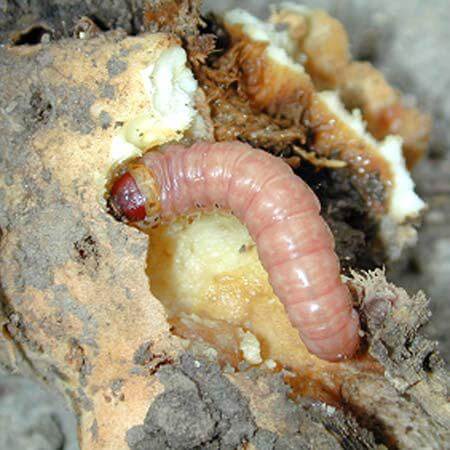That’s disgusting

Yuk!
This wet and warm weather has been a boon for our gardens…well, most of them. There are some plants that just are not suited to this weather. One is the tall bearded iris. Cranky would be a kind word to describe its attitude.
Tall bearded iris bloom in the spring, after the tulips and at about the same time as the peonies. They are showboats and prima donnas with their stunning blooms. Tall beaded iris are different from Siberian iris, and their problems do not seem to plague the mid-size and Lilliput species.
The bottom line is that tall bearded iris do not like to be wet. They are a Mediterranean climate plant. Well, what are you doing here?
Rhizome rot can happen particularly after our cold wet spring. The remedy is to scoop out the rot with a spoon (it really stinks!) and drench with a 10 percent bleach solution. You can also dig up the plant and separate the new growth, drenching the tuber before planting.
Even more disgusting than rot is iris borer. The description from Schreiner’s gardens is the most accurate: “These ¼ inch-long larvae crawl onto the iris and up the leaves. Near the top they chew into the leaves and then down the rhizomes, where they gorge themselves until they reach a size of about 1 ½ inches in length. Borer injury often appears as notched wounds on slimy wet looking areas on the leaves. Borers often will hollow out whole rhizomes, causing the fans to collapse and the remaining tissue to rot.”
That is certainly a gardening upper. Now what do I do?
This is the time that the borers change into pupae and can be treated. A couple of options: systemic insect ides such as Imidaaclorid. Be sure to read the label. Many gardeners use gloves and a pail diluted to the right amount and sponge the plants. An alternative is a 10 percent solution of Murphy’s Oil Soap, using the same gloves and sponge method.
As usual, the basics apply. Keep plants clean because the eggs of the iris borer are laid on or near the plant detritus on the ground. Damaged and infected plants need to be bagged and sent to the landfill.
When planting or transplanting iris, choose a sunny, well-drained location. A slope or raised bed is a good location. Add sand, coarse hummus or gypsum to heavy soil. Plant the iris with the tops of the rhizomes exposed and the roots are spread out facing downward. Iris need to be thinned every three-to-four years. It’s easy…just cut away the center rhizome and leave the smaller one.
It has been a difficult year for iris, but let’s stay with them through these hard times.

